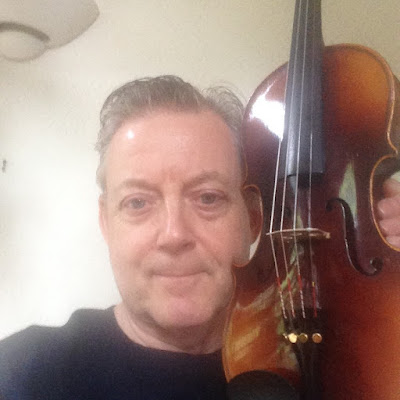A full size, beaver tooth carved, Czecho-Slovakia (Bohemia) Violin Made around 1919-1945
Not all violins that are beaver tooth carved with bass bars hurriedly carved out from the violin's table are Saxony (German) violins. This is a Maggini pattern full size violin made after WWI, when the official spelling of Czecho-Slovakia with a hyphen was first used in 1919. The hyphen was dropped in 1945.
This is a typical Bohemia "trade violin", made for students.
The instrument is well used and has suffered a lot of hard treatment. It is quite light in weight and narrow in the bouts. Perfectly suited for a smaller teenager or adult. The red varnish is chipped and chaffed and scratched in many places. This violin has been played a great deal.
This violin has a flamed maple back, sides and neck. The table is fairly close grained spruce, widening slightly towards the edges. This antique student violin also has traditional Maggini double purfling on the top and back.
Like so many Saxony (German) factory violins of the 19th and early 20th century this Bohemia instrument is lined, but it is not fully blocked in the corners and not blocked in the upper corners at all.











Comments
Post a Comment